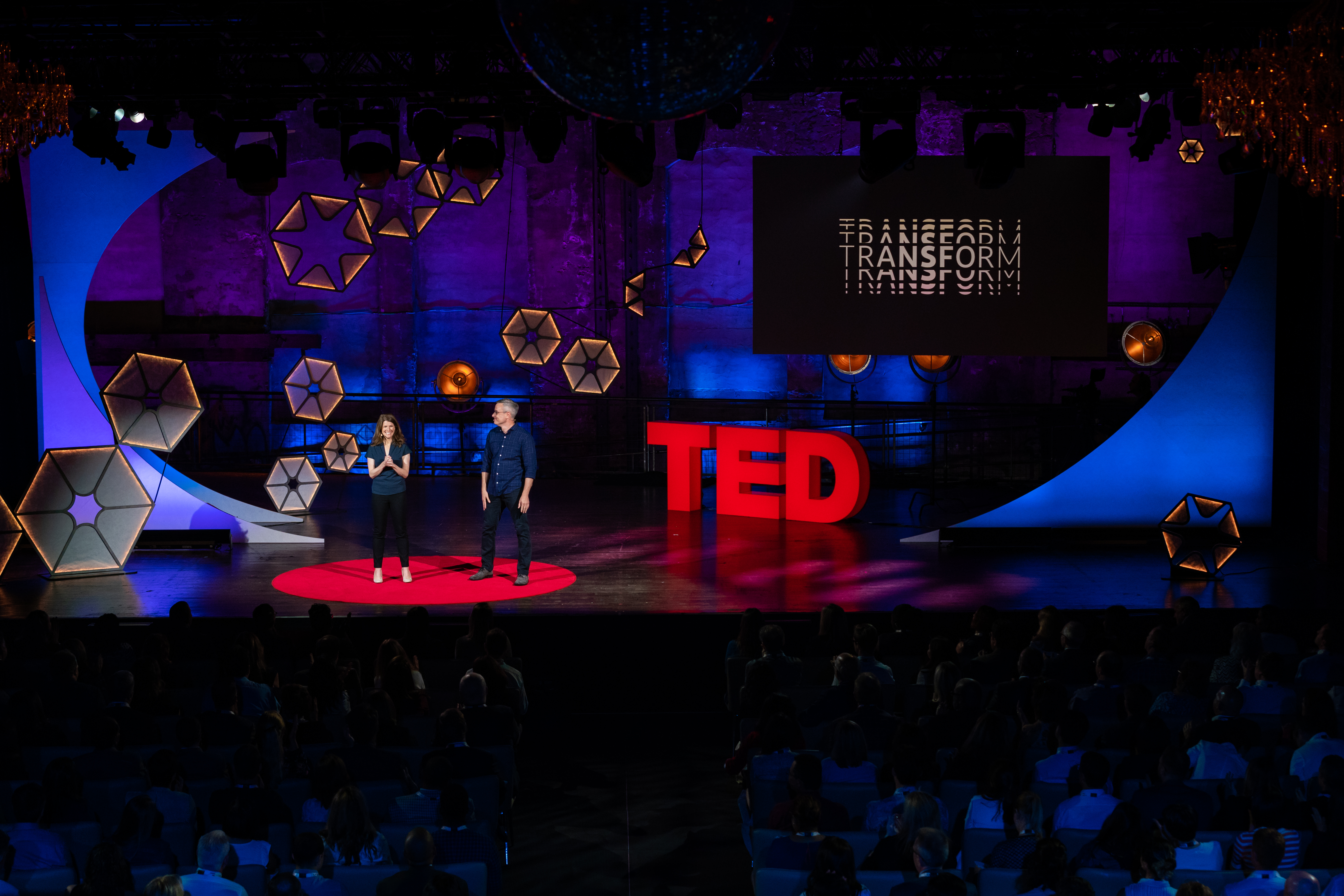
Hosts Briar Goldberg and David Biello open TED@DuPont at The Fillmore, September 12, 2019, in Philadelphia, Pennsylvania. (Photo: Ryan Lash / TED)
Transformation starts with the spark of something new. In a day of talks and performances about transformation, 16 speakers and performers explored exciting developments in science, technology and beyond — from the chemistry of everyday life to innovations in food, “smart” clothing, enzyme research and much more.
The event: TED@DuPont: Transform, hosted by TED’s David Biello and Briar Goldberg
When and where: Thursday, September 12, 2019, at The Fillmore in Philadelphia, PA
Music: Performances by Elliah Heifetz and Jane Bruce and Jeff Taylor, Matt Johnson and Jesske Hume
The talks in brief:
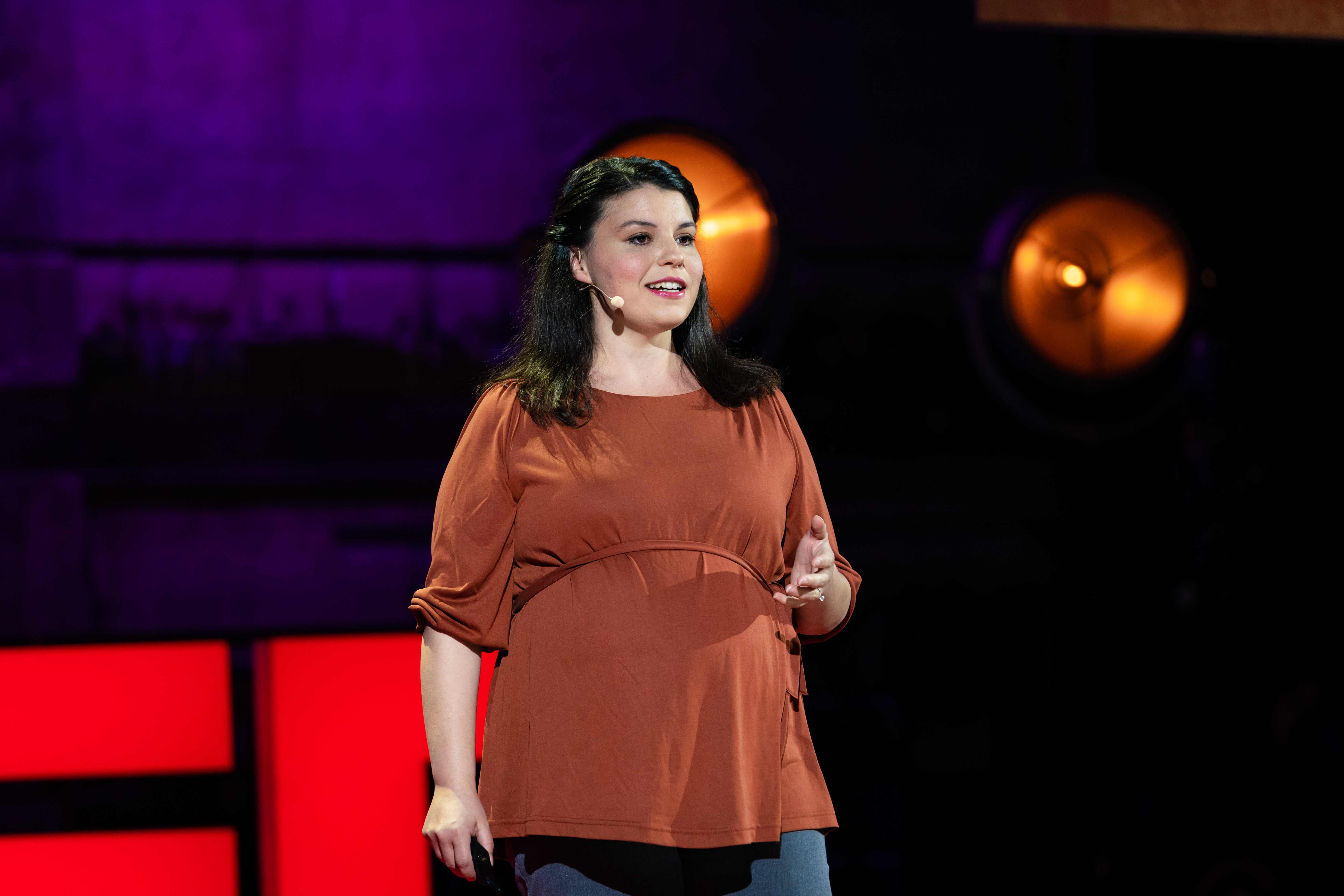
“The next time you send a text or take a selfie, think about all those atoms that are hard at work and the innovation that came before them,” says chemist Cathy Mulzer. She speaks at TED@DuPont at The Fillmore, September 12, 2019, in Philadelphia, Pennsylvania. (Photo: Ryan Lash / TED)
Cathy Mulzer, chemist and tech shrinker
Big idea: You owe a big thank you to chemistry for all that technology in your pocket.
Why? Almost every component that goes into creating a superpowered device like a smartphone or tablet exists because of a chemist — not the Silicon Valley entrepreneurs that come to most people’s minds. Chemistry is the real hero in our technological lives, Mulzer says — building up and shrinking down everything from vivid display screens and sleek bodies to nano-sized circuitries and long-lasting batteries.
Quote of talk: “The next time you send a text or take a selfie, think about all those atoms that are hard at work and the innovation that came before them.”
Adam Garske, enzyme engineer
Big Idea: We can harness the power of new, scientifically modified enzymes to solve urgent problems across the world.
How? Enzymes are proteins that catalyze chemical reactions — turning milk into cheese, for example. Through a process called “directed evolution,” scientists can carefully edit and design the building blocks of enzymes for specific functions — to help treat diseases like diabetes, reduce CO2 in our laundry, break down plastics in the ocean and more. Enzyme evolution is already changing how we tackle health and environmental issues, Garske says, and there’s so much more ahead.
Quote of the talk: “With enzymes, we can edit what nature wrote — or write our own stories.”
Henna-Maria Uusitupa, bioscientist
Big idea: Our bodies host an entire ecosystem of microorganisms that we’ve been cultivating since we were babies. And as it turns out, the bacteria we acquire as infants help keep us healthier as adults. Henna-Maria Uusitupa wants to ensure that every baby grows a healthy microbiome.
How? Babies must acquire the right balance of microbes in their bodies, but they must also receive them at the correct stages of their lives. C-sections and disruptions in breastfeeding can throw a baby’s microbiome out of balance. With a carefully curated blend of probiotics and other chemicals, scientists are devising ways to restore harmony — and beneficial microbes — to young bodies.
Quote of the talk: “I want to contribute to the unfolding of a future in which each baby has an equal starting point to be programmed for life-long health.”
Leon Marchal, innovation director
Big Idea: Animals account for 50 to 80 percent of antibiotic consumption worldwide — a major contributing factor to the growing threat of antimicrobial resistance. To combat this, farmers can adopt a number of practices — like balanced, antibiotic-free nutrition for animals — on their farms.
Why: The UN predicts that antimicrobial resistance will become our biggest killer by 2050. To prevent that from happening, Marchal is working to transform a massive global industry: animal feed. Antibiotics are used in animal feed to keep animals healthy and to grow them faster and bigger. They can be found in the most unlikely places — like the treats we give our pets. This constant, low-dose exposure could lead some animals to develop antibiotic-resistant bugs, which could cause wide-ranging health problems for animals and humans alike. The solution? Antibiotic-free production — and it all starts with better hygiene. This means taking care of animal’s good bacteria with balanced nutrition and alterations to the food they eat, to keep their microbiomes more resilient.
Quote of the talk: “We have the knowledge on how to produce meat, eggs and milk without or with very low amounts of antibiotics. This is a small price to pay to avoid a future in which bacterial infections again become our biggest killer.”
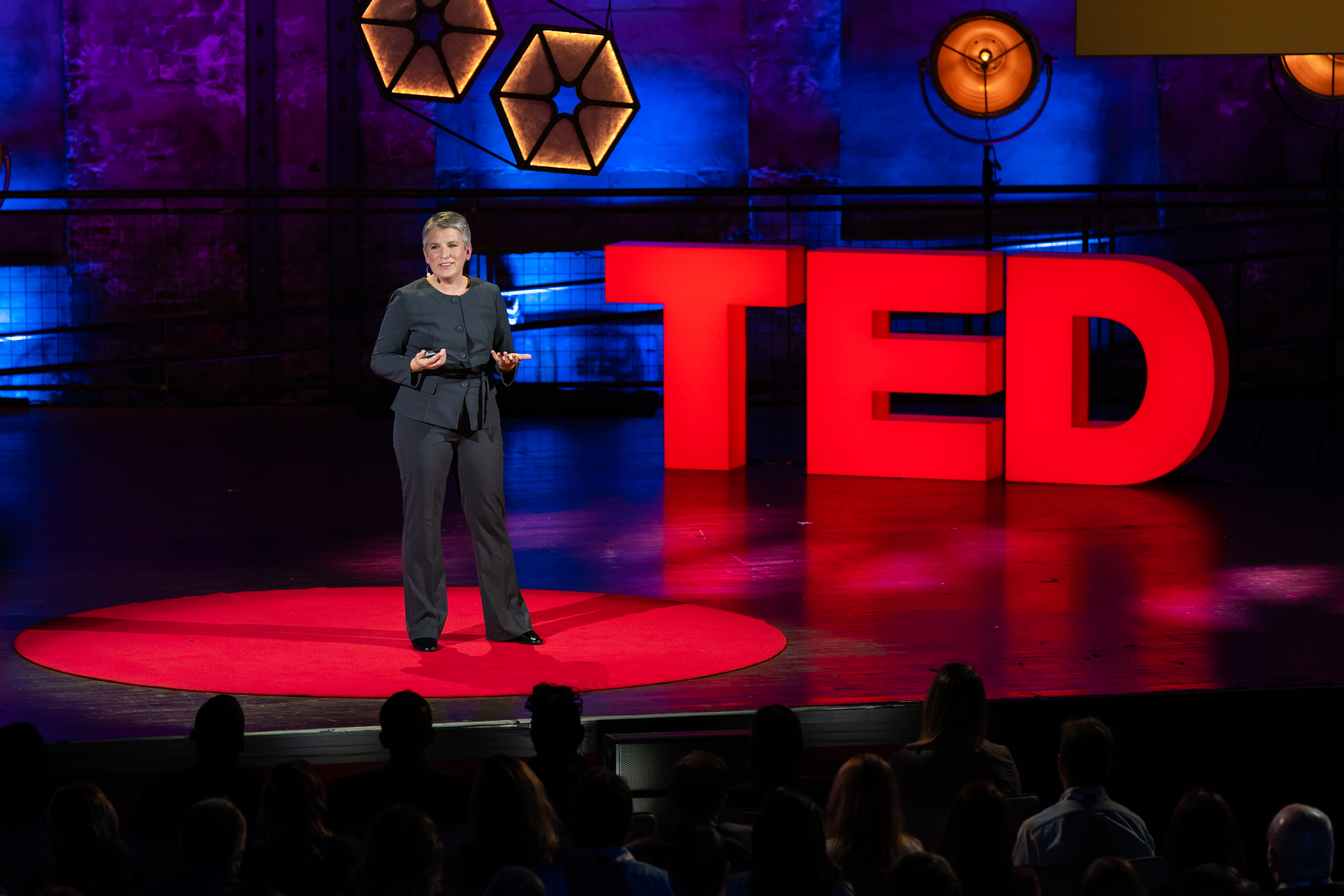
Physical organic chemist Tina Arrowood shares a simple, eco-friendly proposal to protect our freshwater resources from future pollution. She speaks at TED@DuPont at TED@DuPont at The Fillmore, September 12, 2019, in Philadelphia, Pennsylvania. (Photo: Ryan Lash / TED)
Tina Arrowood, physical organic chemist
Big idea: Human activity is a threat to freshwater rivers. We can transform that risk into an environmental and economic reward.
How? A simple, eco-friendly proposal to protect our precious freshwater resources from future pollution. We’ve had technology that purifies industrial wastewaters for the last 50 years. Arrowood suggests that we go a step further: as we clean our rivers, we can sell the salt byproduct as a primary resource — to de-ice roads and for other chemical processing — rather than using the tons of salt we currently mine from the earth.
Fun fact: If you were to compare the relative volume of ocean water to fresh river water on our planet, the former would be an Olympic-sized swimming pool — and the latter would be a one-gallon jug.
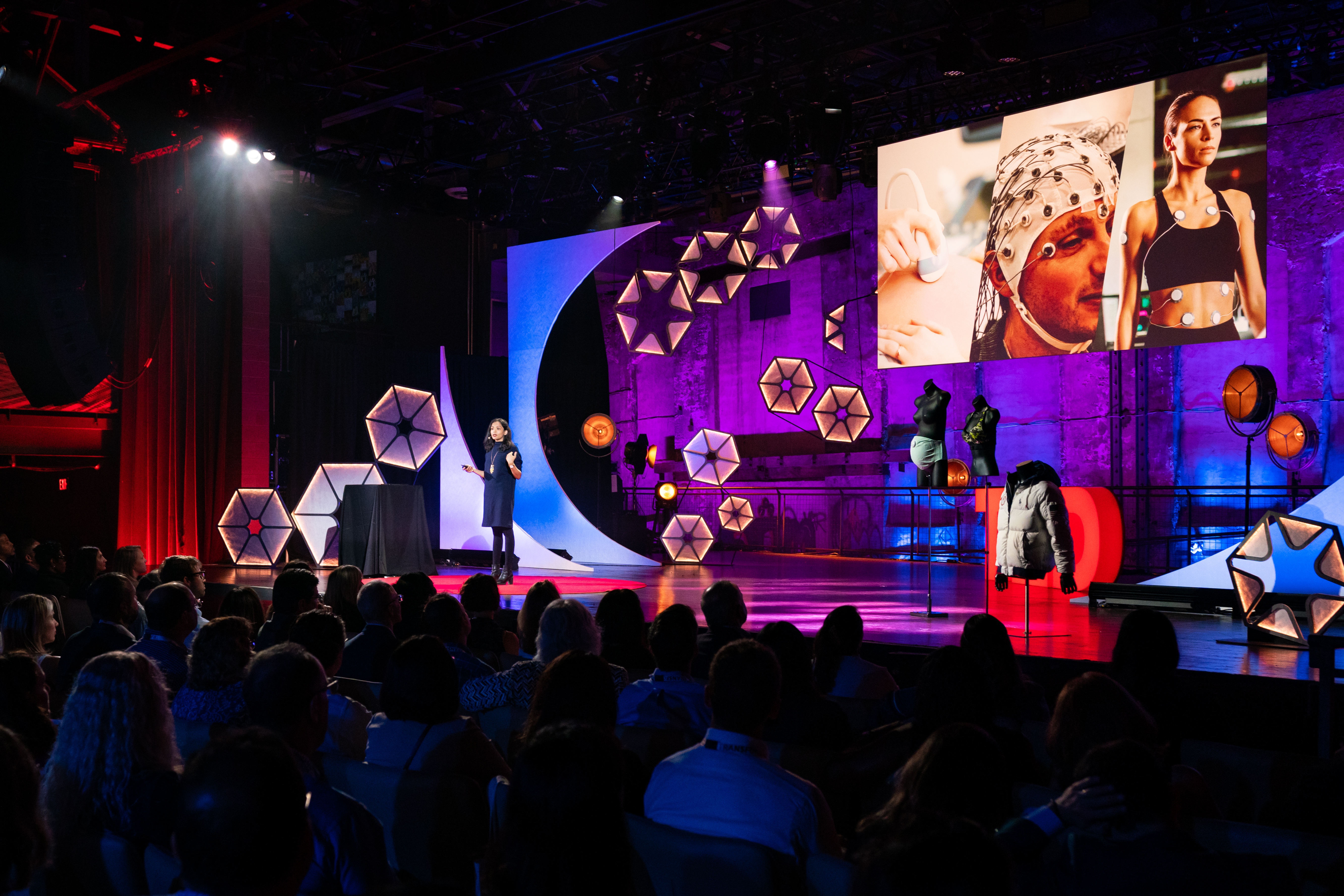
“Why not transform clothing and make it a part of our digitized world, in a manner that shines continuous light into our health and well-being?” asks designer Janani Bhaskar. She speaks at TED@DuPont at The Fillmore, September 12, 2019, in Philadelphia, Pennsylvania. (Photo: Ryan Lash / TED)
Janani Bhaskar, smart clothing designer
Big Idea: By designing “smart” clothing with durable technologies, we can better keep track of health and well-being.
How? Using screen-printing technology, we can design and attach biometric “smart stickers” to any piece of clothing. These stickers are super durable, Bhaskar says: they can withstand anything our clothing can, including workouts and laundry. They’re customizable, too — athletes can use them to track blood pressure and heart rate, healthcare providers can use them to remotely monitor vital signs, and expecting parents can use them to receive information about their baby’s growth. By making sure this technology is affordable and accessible, our clothing — the “original wearables” — can help all of us better understand our bodies and our health.
Quote of the talk: “Why not transform clothing and make it a part of our digitized world, in a manner that shines continuous light into our health and well-being?”
Camilla Andersen, neuroscientist and food scientist
Big idea: We can create tastier, healthier foods with insights from people’s brain activity.
How? Our conscious experience of food — how much we enjoy a cup of coffee or how sweet we find a cookie to be, for example — is heavily influenced by hidden biases. Andersen provides an example: after her husband started buying a fancy coffee brand, she conducted a blind taste test with two cups of coffee. Her husband described the first cup as cheap and bitter, and raved about the second — only to find out that the two were actually the same kind of coffee. The taste difference was the result of his bias for the new, fancy coffee — the very kind of bias that can leave food scientists in the dark when testing out new products. But there’s a workaround: brain scans that can access the raw, unfiltered, unconscious taste information that’s often lost in people’s conscious assessments. With this kind of information, Andersen says, we can create healthier foods without sacrificing taste — like creating a zero-calorie milkshake that tastes just like the original.
Fun fact: The five basic tastes are universally accepted: sweet, salty, sour, bitter and umami. But, based on evidence from Andersen’s EEG experiments, there’s evidence of a new sixth basic taste: fat, which we may sense beyond its smell and texture.
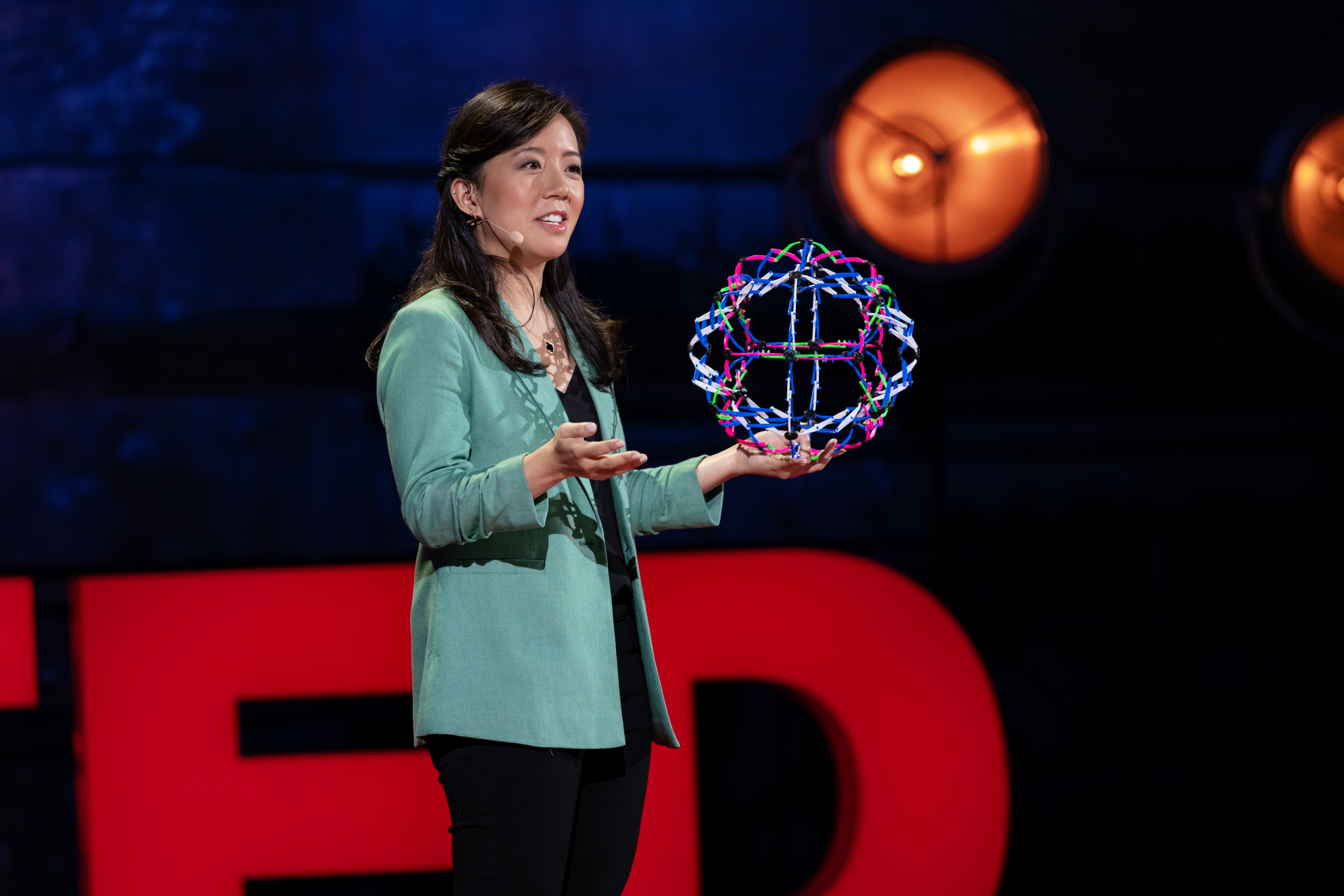
“Science is an integral part of our everyday lives, and I think we’re only at the tip of the iceberg in terms of harnessing all of the knowledge we have to create a better world,” says enzyme scientist Vicky Huang. She speaks at TED@DuPont at The Fillmore, September 12, 2019, in Philadelphia, Pennsylvania. (Photo: Ryan Lash / TED)
Vicky Huang, enzyme scientist
Big idea: Enzymes are unfamiliar to many of us, but they’re far more important in our day-to-day lives than we realize — and they might help us unlock eco-friendly solutions to everything from food spoilage to household cleaning problems.
How? We were all taught in high school that enzymes are a critical part of digestion and, because of that, they’re also ideal for household cleaning. But enzymes can do much more than remove stains from our clothes, break down burnt-on food in our dishwashers and keep our baguettes soft. As scientists are able to engineer better enzymes, we’ll be able to cook and clean with less energy, less waste and fewer costs to our environment.
Quote of the talk: “Everywhere in your homes, items you use every day have had a host of engineers and scientists like me working on them and improving them. Just one part of this everyday science is using enzymes to make things more effective, convenient and environmentally sustainable.”
Geert van der Kraan, microbe detective
Big Idea: We can use microbial life in oil fields to make oil production safer and cleaner.
How? Microbial life is often a problem in oil fields, corroding steel pipes and tanks and producing toxic chemicals like dihydrogen sulfide. We can transform this challenge into a solution by studying the clues these microbes leave behind. By tracking the presence and activity of these microbes, we can see deep within these undergrounds fields, helping us create safer and smoother production processes.
Quote of the talk: “There are things we can learn from the microorganisms that call oil fields their homes, making oil field operations just a little cleaner. Who knows what other secrets they may hold for us?”
Lori Gottlieb, psychotherapist and author
Big idea: The stories we tell about our lives shape who we become. By editing our stories, we can transform our lives for the better.
How? When the stories we tell ourselves are incomplete, misleading or just plain wrong, we can get stuck. Think of a story you’re telling about your life that’s not serving you — maybe that everyone’s life is better than yours, that you’re an impostor, that you can’t trust people, that life would be better if only a certain someone would change. Try exploring this story from another point of view, or asking a friend if there’s an aspect of the story you might be leaving out. Rather than clinging to an old story that isn’t doing us any good, Gottlieb says, we can work to write the most beautiful story we can imagine, full of hard truths that lead to compassion and redemption — our own “personal Pulitzer Prize.” We get to choose what goes on the page in our minds that shapes our realities. So get out there and write your masterpiece.
Quote of the talk: “We talk a lot in our culture about ‘getting to know ourselves,’ but part of getting to know yourself is to unknow yourself: to let go of the one version of the story you’ve told yourself about who you are — so you can live your life, and not the story you’ve been telling yourself about your life.”
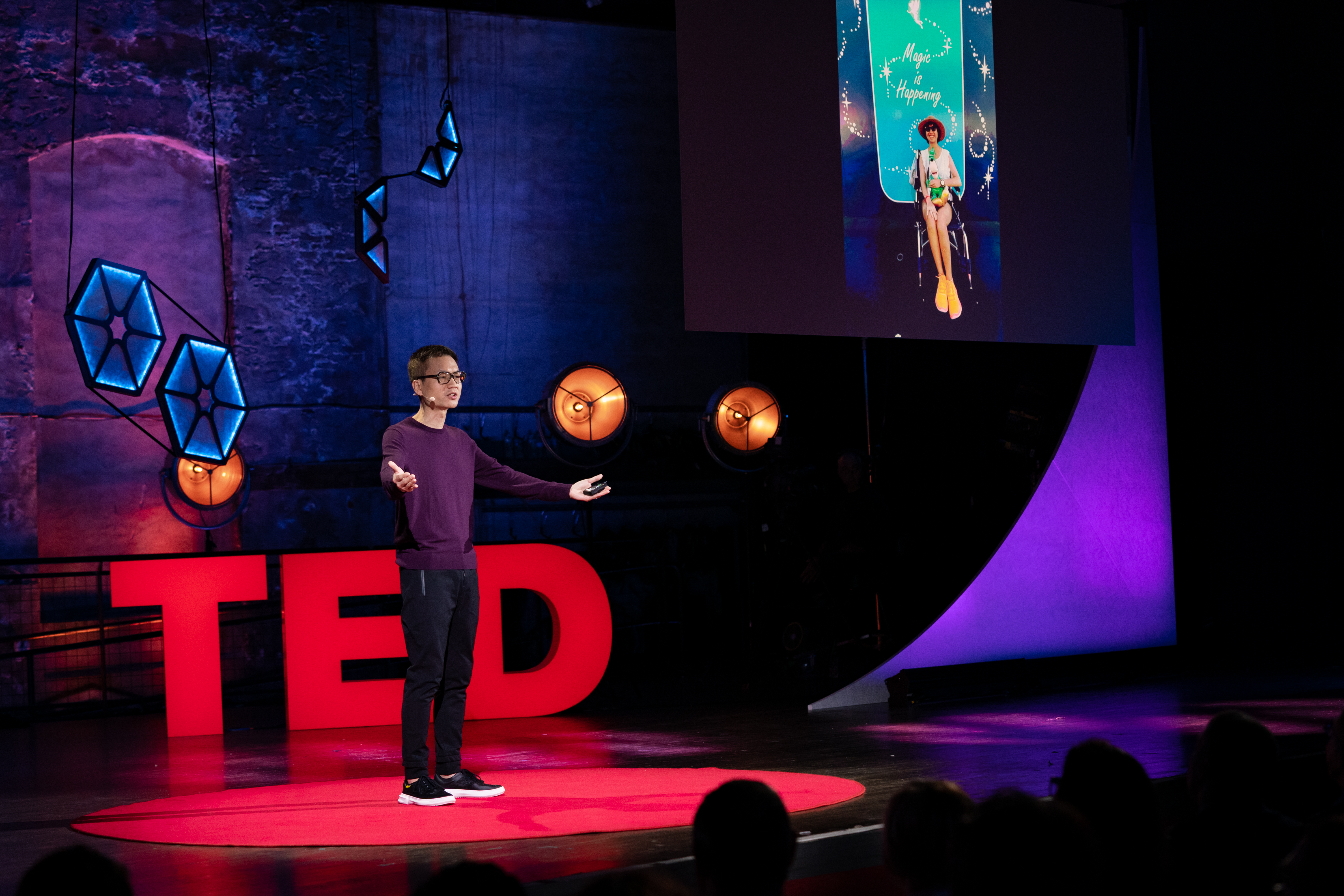
“I’m standing here before you because I have a vision for the future: one where technology keeps my daughter safe,” says tech evangelist Andrew Ho. He speaks at TED@DuPont at The Fillmore, September 12, 2019, in Philadelphia, Pennsylvania. (Photo: Ryan Lash / TED)
Andrew Ho, tech evangelist
Big idea: As technological devices become smaller, faster and cheaper, they make daily tasks more convenient. But they can also save lives.
How? For epilepsy patients like Andrew Ho’s daughter Hilarie, a typical day can bring dangerous — or even fatal — challenges. Medical devices currently under development could reduce the risk of seizures, but they’re bulky and fraught with risk. The more quickly developers can improve the speed and portability of these devices (and other medical technologies), the sooner we can help people with previously unmanageable diseases live normal lives.
Quote of the talk: “Advances in technology are making it possible for people with different kinds of challenges and problems to lead normal lives. No longer will they feel isolated and marginalized. No longer will they live in the shadows, afraid, ashamed, humiliated and excluded. And when that happens, our world will be a much more diverse and inclusive place, a better place for all of us to live.”
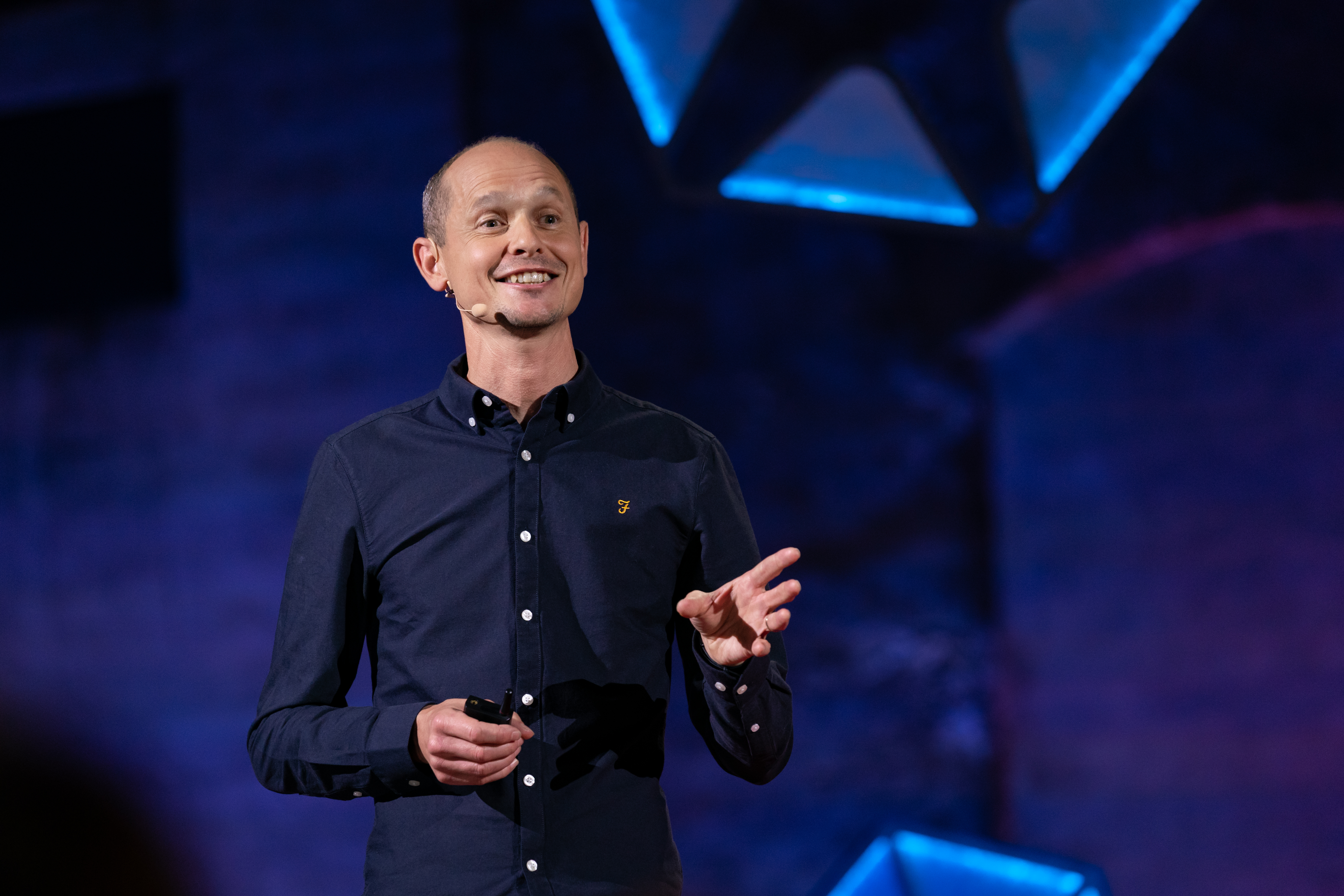
“Learning from our mistakes is essential to improvement in many areas of our lives, so why not be intentional about it in our most risk-filled activity?” asks engineer Ed Paxton. He speaks at TED@DuPont at The Fillmore, September 12, 2019, in Philadelphia, Pennsylvania. (Photo: Ryan Lash / TED)
Ed Paxton, aircraft engineer and safety expert
Big idea: Many people fear flying but think nothing of driving their cars every day. Statistically, driving is far more dangerous than flying — in part because of common-sense principles pilots use to govern their behavior. Could these principles help us be safer on the road?
How? There’s a lot of talk about how autonomous vehicles will make traffic safer in the future. Ed Paxton shares three principles that can reduce accidents right now: “positive paranoia” (anticipating possible hazards or mishaps without anxiety), allowing feedback from passengers who might see things you don’t and learning from your mistakes (near-misses caused by driving while tired, for example).
Quote of the talk: “Driving your car is probably the most dangerous activity that most of you do … it’s almost certain you know someone who’s been seriously injured or lost their life out on the road … Over the last ten years, seven billion people have boarded domestic airline flights, and there’s been just one fatality.”
Jennifer Vail, tribologist
Big idea: Complex systems lose much of their energy to friction; the more energy they lose, the more power we consume to keep them running. Tribology — or the study of friction and things that rub together — could unlock massive energy savings by reducing wear and alleviating friction in cars, wind turbines, motors and engines.
How? By studying the different ways surfaces rub together, and engineering those surfaces to create more or less friction, tribologists can tweak a surprising range of physical products, from dog food that cleans your pet’s teeth to cars that use less gas; from food that feels more appetizing in our mouth to fossil fuel turbines that waste less power. Some of these changes could have significant impacts on how much energy we consume.
Quote of the talk: “I have to admit that it’s a lot of fun when people ask me what I do for my job, because I tell them: ‘I literally rub things together.'”